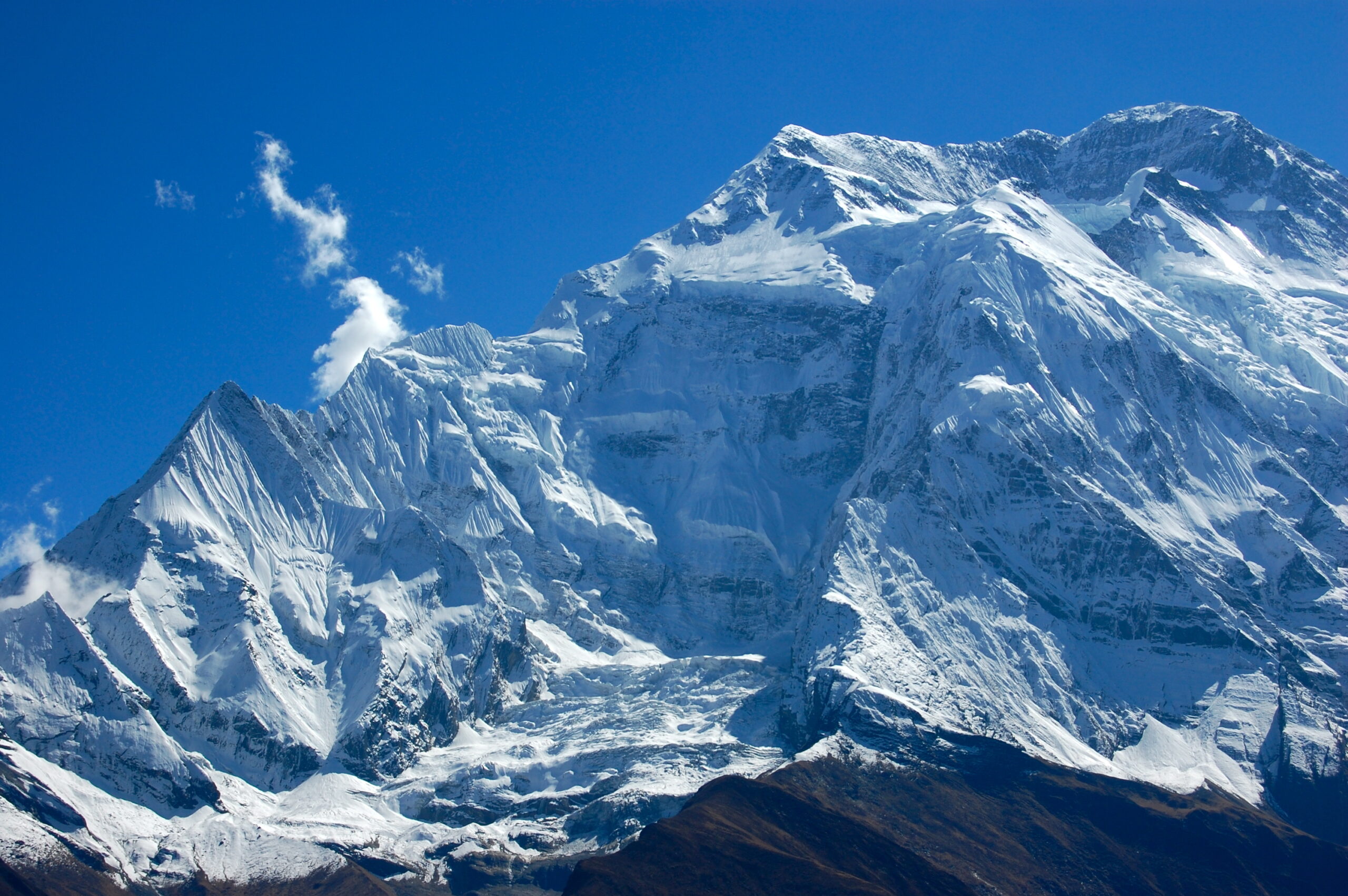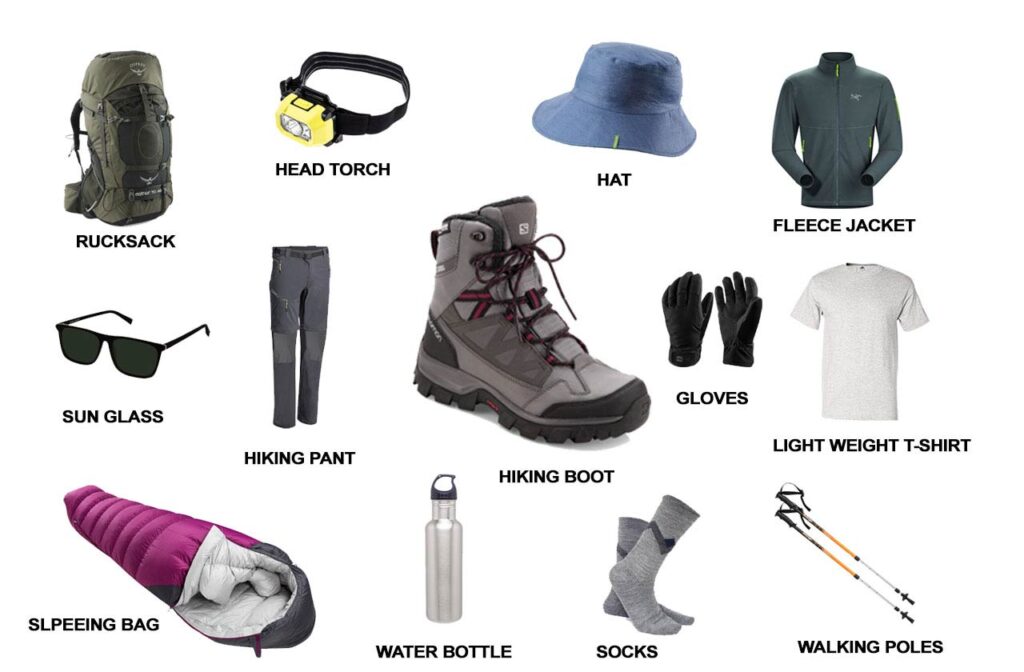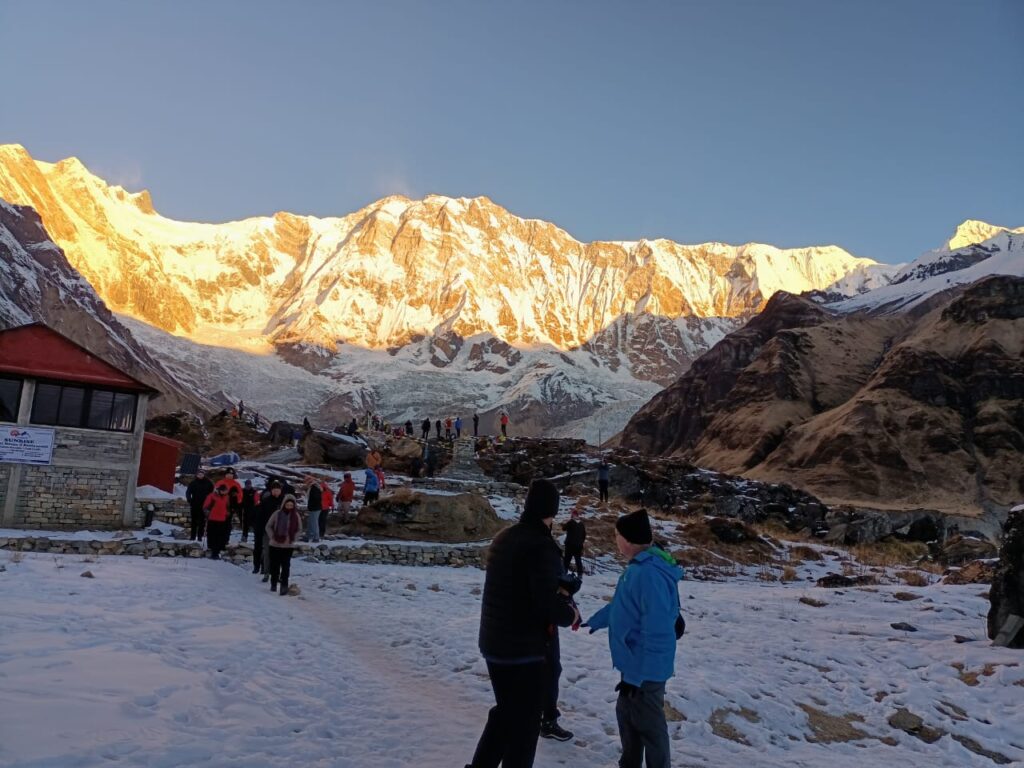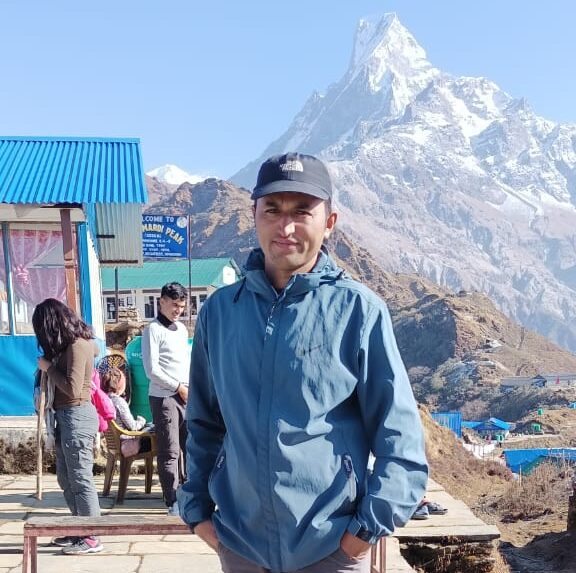
The Annapurna Base Camp (ABC) Trek is one of Nepal’s most iconic and rewarding trekking experiences, offering trekkers the chance to walk through diverse landscapes, from lush green forests and terraced fields to the rocky highlands of the Himalayas. Standing at the foot of Annapurna I (8,091 meters), the 10th highest mountain in the world, trekkers are rewarded with awe-inspiring panoramic views of some of the world’s highest peaks. However, the trek is not without its challenges, and proper preparation is essential to ensure a successful and enjoyable journey.
In this comprehensive guide, we’ll delve into the difficulty of the Annapurna Base Camp Trek and provide you with detailed tips and advice on how to prepare for this adventure. By the end of this guide, you’ll be fully equipped with the knowledge you need to tackle the ABC trek with confidence.
Understanding Annapurna Base Camp Trek Difficulty
The Annapurna Base Camp Trek is often classified as a moderately challenging trek, but the difficulty can vary depending on individual fitness levels, experience, and preparation. Below are the key factors that contribute to the difficulty of the trek:
1. Altitude and Acclimatization
One of the most significant challenges of the Annapurna Base Camp Trek is the altitude. The highest point of the trek is Annapurna Base Camp itself, which sits at an elevation of 4,130 meters (13,550 feet). While this altitude is lower than many other treks in the region, it is still high enough to cause altitude-related issues for some trekkers.
- Altitude Sickness: Also known as Acute Mountain Sickness (AMS), altitude sickness can affect trekkers who ascend too quickly without proper acclimatization. Symptoms include headaches, nausea, dizziness, and fatigue. Severe cases can lead to more serious conditions such as High-Altitude Pulmonary Edema (HAPE) or High-Altitude Cerebral Edema (HACE), which can be life-threatening.
- Acclimatization Strategy: To reduce the risk of altitude sickness, it’s crucial to follow a gradual ascent, allowing your body time to adjust to the thinning air. Most trekking itineraries include built-in acclimatization days, especially at higher altitudes, to help your body adapt.
2. Trekking Duration and Daily Distances
The Annapurna Base Camp Trek typically lasts between 7 to 12 days, depending on the specific route you choose and your pace. The total distance covered is approximately 110 kilometers (68 miles), with daily trekking hours ranging from 5 to 8 hours.
- Daily Challenges: The daily trekking distances can be demanding, particularly on days that involve long ascents or descents. The trail includes sections with steep climbs, which can be taxing on the legs and lungs, especially as you approach higher altitudes.
- Cumulative Fatigue: As the trek progresses, cumulative fatigue can set in, especially for those who are not used to walking long distances for consecutive days. Adequate physical preparation before the trek is essential to build the endurance needed to complete the trek comfortably.
3. Terrain and Trail Conditions
The Annapurna region is known for its diverse terrain, which adds to the trek’s difficulty. The trail passes through a variety of landscapes, from terraced fields and dense rhododendron forests to rocky paths and exposed ridgelines.
- Stone Steps: One of the defining features of the Annapurna region is the extensive network of stone steps, particularly in the lower sections of the trek. These steps can be challenging, especially during steep ascents and descents, and can take a toll on the knees and ankles.
- Rocky and Uneven Paths: As you ascend higher, the trail becomes more rugged and rocky. In some sections, the path narrows and becomes exposed, requiring careful footwork and balance.
- Weather-Related Challenges: The condition of the trail can also be affected by the weather. During the monsoon season, the trail can become slippery and muddy, while in the winter, snow and ice can make certain sections more treacherous. Trekkers need to be prepared for these varying conditions by wearing appropriate footwear and using trekking poles for added stability.
4. Weather and Climate Conditions
The weather in the Annapurna region can be unpredictable, adding another layer of difficulty to the trek. The climate varies significantly depending on the season, with each season presenting its own challenges.
- Spring (March to May): Spring is one of the best times to trek to Annapurna Base Camp, with mild temperatures and clear skies. However, it’s also the peak season, meaning the trail can be crowded, and accommodations may be fully booked. The lower sections of the trail can be warm, while temperatures drop significantly as you gain altitude.
- Monsoon (June to August): The monsoon season brings heavy rainfall, making the trail slippery and prone to landslides. Leeches can also be an issue in the lower, forested sections. Visibility is often reduced due to clouds and mist, obscuring mountain views. However, the landscape is lush and green during this time.
- Autumn (September to November): Autumn is the most popular trekking season, offering stable weather and clear skies. The temperatures are cool and comfortable, making it an ideal time for trekking. However, the popularity of this season means that the trails and teahouses can be crowded.
- Winter (December to February): Winter trekking to Annapurna Base Camp is less common due to the cold temperatures and the possibility of snow, especially at higher altitudes. The trail can be icy and slippery, and some teahouses may close due to the cold. However, for those willing to brave the cold, winter offers solitude and stunning snow-covered landscapes.
Comprehensive Preparation for Annapurna Base Camp Trek
Proper preparation is essential to ensure a successful and enjoyable Annapurna Base Camp Trek. Below are detailed tips and recommendations to help you prepare effectively for the trek:
1. Physical Training and Conditioning
The Annapurna Base Camp Trek requires a good level of physical fitness, as you’ll be trekking for several hours each day over challenging terrain. A solid fitness routine before your trek will help you build the necessary stamina, strength, and endurance.
- Cardiovascular Fitness: Cardiovascular exercises such as running, swimming, cycling, and hiking are crucial for building stamina and improving lung capacity. Aim to engage in cardio workouts at least 3-4 times a week in the months leading up to the trek.
- Strength Training: Strength training exercises should focus on the legs, core, and upper body. Squats, lunges, leg presses, and step-ups are excellent for building leg strength, which is essential for tackling the steep ascents and descents. Core exercises like planks and Russian twists will help stabilize your body and prevent injuries.
- Hiking Practice: Whenever possible, practice hiking on uneven terrain with a loaded backpack. Start with shorter hikes and gradually increase the distance and elevation. This will help your body get used to the physical demands of trekking and carrying a backpack.
- Flexibility and Balance: Incorporate stretching and balance exercises into your routine to improve flexibility and prevent injuries. Yoga and Pilates can be beneficial for maintaining flexibility and improving balance.
2. Mental Preparation and Attitude
Trekking in the Himalayas is as much a mental challenge as it is a physical one. Maintaining a positive attitude and mental resilience is key to overcoming the difficulties of the trek.
- Mental Toughness: Long days on the trail, challenging terrain, and changing weather conditions can be mentally taxing. Prepare yourself by setting realistic expectations and staying focused on your goal. Visualization techniques, where you imagine yourself successfully completing the trek, can be helpful.
- Cultural Sensitivity: The Annapurna region is home to diverse ethnic communities, including Gurungs and Magars, who have their own customs, traditions, and religious practices. Respect the local culture and be open to learning about the way of life in these remote villages.
- Mindfulness: Trekking in the Himalayas offers a unique opportunity to connect with nature and practice mindfulness. Take time to appreciate the stunning landscapes, the rhythm of your footsteps, and the simplicity of life on the trail.
3. Acclimatization and Altitude Management
Acclimatization is crucial to prevent altitude sickness and ensure a safe and enjoyable trek. The key to successful acclimatization is to follow a gradual ascent and listen to your body.
- Pacing Yourself: Avoid rushing through the trek, especially at higher altitudes. The general rule of thumb is to “trek high, sleep low,” meaning you should climb to higher elevations during the day but sleep at a lower altitude at night.
- Hydration: Staying well-hydrated is essential for acclimatization. Drink plenty of water, herbal teas, and soups to keep your body hydrated. Avoid alcohol and caffeine, as they can contribute to dehydration.
- Nutrition: Proper nutrition plays a significant role in acclimatization. Consume a balanced diet with plenty of carbohydrates, which provide the energy needed for trekking at high altitudes. Local foods like dal bhat (lentil soup with rice) are nutritious and readily available on the trail.
- Recognizing Altitude Sickness: Be aware of the symptoms of altitude sickness, which include headaches, nausea, dizziness, shortness of breath, and loss of appetite. If you experience any of these symptoms, take it seriously and consider descending to a lower altitude if they persist.
4. Packing and Gear Essentials
Packing the right gear is essential for a successful Annapurna Base Camp Trek. Below is a list of essential items you should bring

- Clothing: Layering is key to staying comfortable on the trek. Bring moisture-wicking base layers, insulating mid-layers (fleece or down jacket), and a waterproof and windproof outer layer. Don’t forget a warm hat, gloves, and thermal underwear for colder days.
- Footwear: A good pair of trekking boots with ankle support is essential for tackling the rugged terrain. Make sure your boots are well broken in before the trek. Bring a pair of comfortable shoes or sandals for relaxing in the teahouses.
- Backpack: A sturdy and comfortable backpack (30-40 liters) is ideal for carrying your daily essentials, such as water, snacks, camera, and extra layers. If you’re hiring a porter, they will carry your main luggage, but you’ll still need a daypack for personal items.
- Sleeping Bag: While teahouses along the trail provide blankets, a good quality sleeping bag rated for at least -10°C (14°F) is recommended, especially if you’re trekking in the colder months.
- Trekking Poles: Trekking poles are highly recommended for the Annapurna Base Camp Trek, as they provide extra stability and reduce the strain on your knees during steep ascents and descents.
- Other Essentials: Sunscreen, sunglasses, a wide-brimmed hat, a first aid kit, water purification tablets or a filter, headlamp, extra batteries, and a power bank for charging electronic devices.
5. Permits and Documentation
To trek in the Annapurna region, you’ll need to obtain several permits:
- Annapurna Conservation Area Permit (ACAP): This permit is required for entry into the Annapurna Conservation Area. It helps fund conservation and community development projects in the region.
- Trekkers’ Information Management System (TIMS) Card: The TIMS card is a mandatory trekking permit that ensures your safety by keeping track of trekkers in the region. There are two types of TIMS cards: one for individual trekkers and one for trekkers in organized groups.
- Passport and Visa: Ensure that your passport is valid for at least six months beyond your planned departure date. You’ll also need a tourist visa for Nepal, which can be obtained on arrival at Tribhuvan International Airport in Kathmandu or in advance from a Nepalese embassy or consulate.
6. Hiring a Guide or Porter
While the Annapurna Base Camp Trek can be done independently, many trekkers choose to hire a guide or porter for added safety and convenience.

- Guide: A licensed trekking guide can provide valuable insights into the local culture, flora, fauna, and geography. They can also help navigate the trail, communicate with locals, and assist in case of emergencies.
- Porter: Hiring a porter allows you to trek with only a daypack, making the trek less physically demanding. Porters typically carry up to 20-25 kilograms (44-55 pounds) of luggage, allowing you to focus on enjoying the trek.
- Guide-Porter: A guide-porter is a hybrid role where one person acts as both a guide and a porter. This option is more economical and suitable for those with lighter loads.
g. Safety Tips and Emergency Preparedness
Safety should be a top priority when trekking to Annapurna Base Camp. Here are some essential safety tips:
- Travel Insurance: Ensure that you have comprehensive travel insurance that covers high-altitude trekking, medical evacuation, and trip cancellation. Emergency evacuation by helicopter can be expensive, so having insurance is crucial.
- Emergency Contacts: Keep a list of emergency contacts, including your embassy, trekking agency, and insurance provider. Share your trekking itinerary with someone back home.
- Teahouse Safety: Stay in reputable teahouses along the trail and avoid wandering off alone, especially after dark. Be cautious of food and water hygiene to avoid illness.
- Weather Awareness: Always check the weather forecast before setting out each day. If severe weather is expected, consider delaying your trek or taking shelter in a safe location.
Conclusion
The Annapurna Base Camp Trek is a rewarding journey that offers breathtaking views, cultural immersion, and a sense of accomplishment. While the trek presents certain challenges, including altitude, varied terrain, and unpredictable weather, proper preparation can help you overcome these obstacles and enjoy a successful trek.
By understanding the trek’s difficulty, engaging in comprehensive physical and mental preparation, and equipping yourself with the right gear and knowledge, you’ll be well-prepared to tackle the Annapurna Base Camp Trek. Whether you’re an experienced trekker or a first timer, this adventure is sure to leave you with unforgettable memories of the majestic Himalayas.
Posted on



